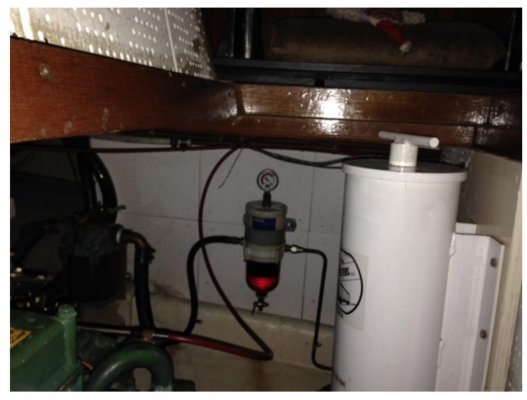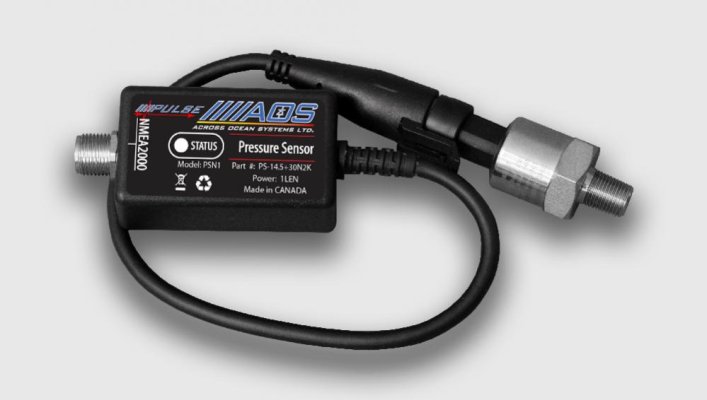The bottom line is that no matter what filter you use and how clean your tanks are, or if you have single or twins, the last fuel fill-up might be the one that leaves you "dead on the water".
I personally had mechanical gauge installed on the exit of my Racor filter where it connects to the engine lift pump. The downside of this mechanical gauge is that you have to go check it, on regular bases, or even if it has max vacuum achieved indication needle, you can still be surprised by faulty batch of fuel.
I replaced that system with VSM - Vessel Systems' Monitor that monitors many other parameters of different subsystems on my vessel and NMEA 2000 vacuum gauge that constantly monitors the status of my dual RACORs, actually the one of them that is being active at the moment. I have it setup to get warning and -4 PSI and alarm ant -5 PSI. I have tested that my engine will runs with vacuum on the gauge in excess of -8 PSI, so I know I have some time in case I can not attend to the filter switch right away (and please don't grill me because I'm referring to vacuum in negative PSI, I know it is not technically correct, but it makes the example easier to understand).
As soon I get warning on my Vessel Systems Monitor, I will switch to the standby filter, and I will plan my filter replacement for when the weather/sea conditions permits, or do it right away if I believe that the stand-by filter will get contaminated fast due to bad batch of fuel. This solution had worked great for me logging 10,000+ miles across the pacific and fuelling-up at all kinds of not that reliable feeling stations....
Here is what I use:
http://www.acrossoceansystems .com
I think this is my "peace of mind" that is well worth it!




